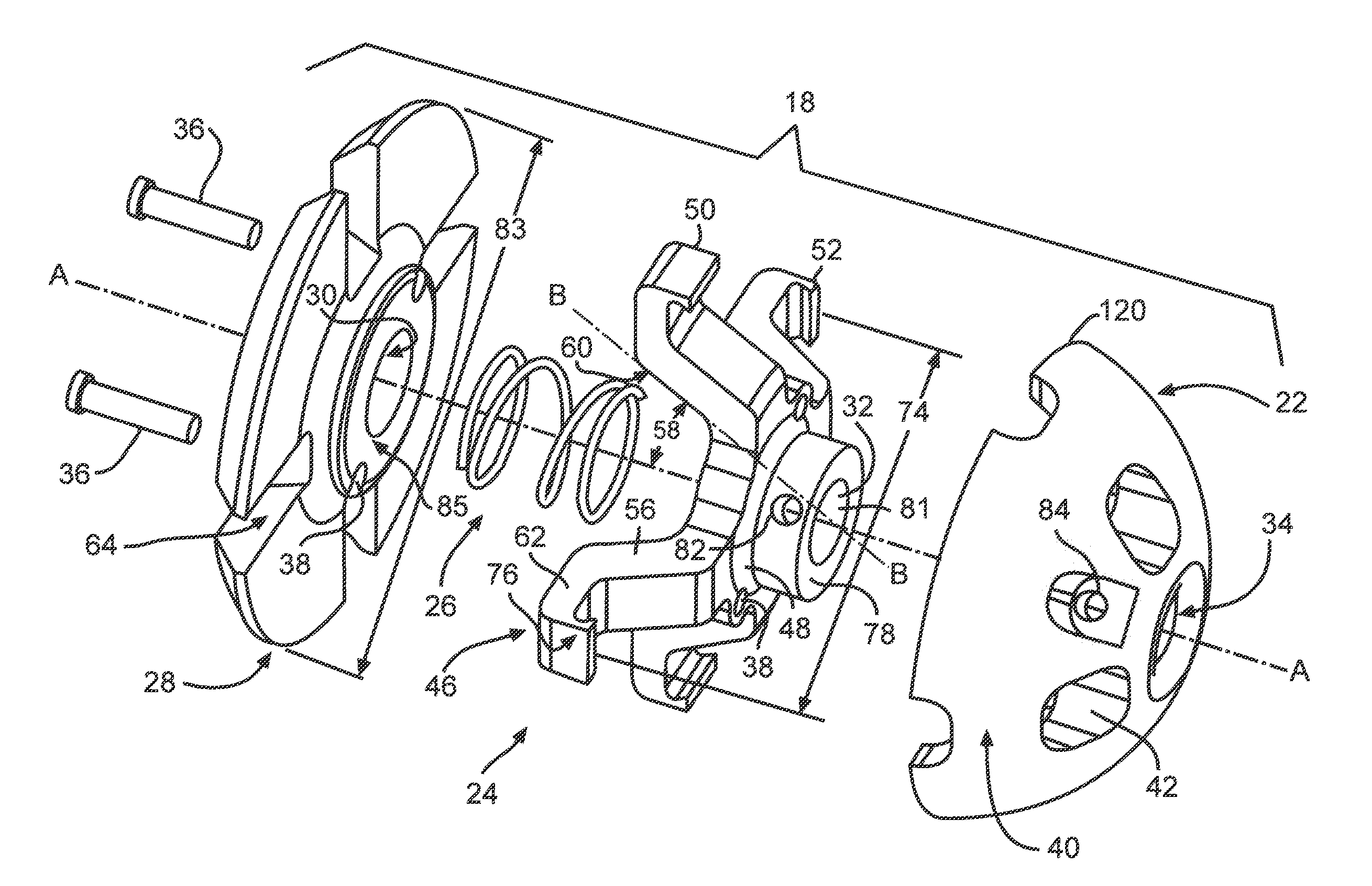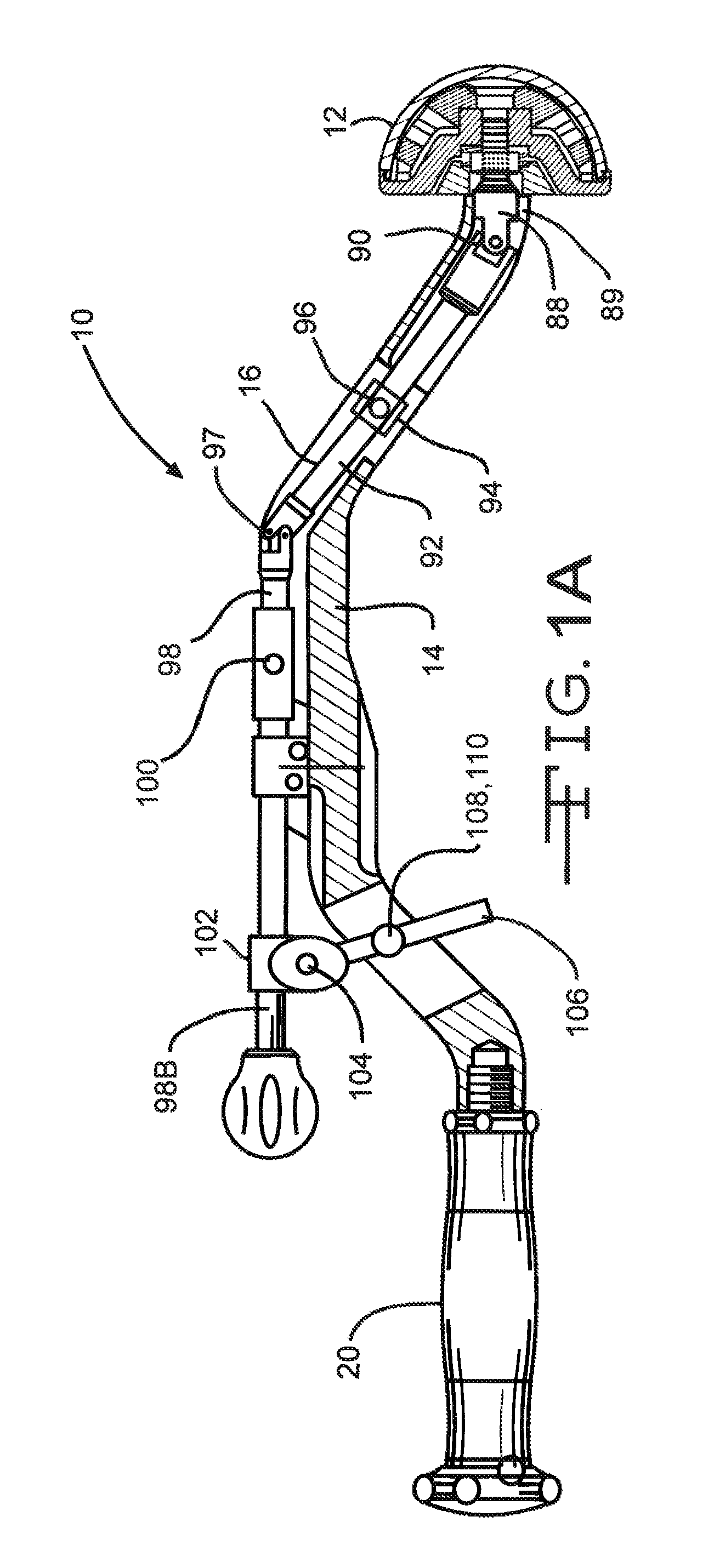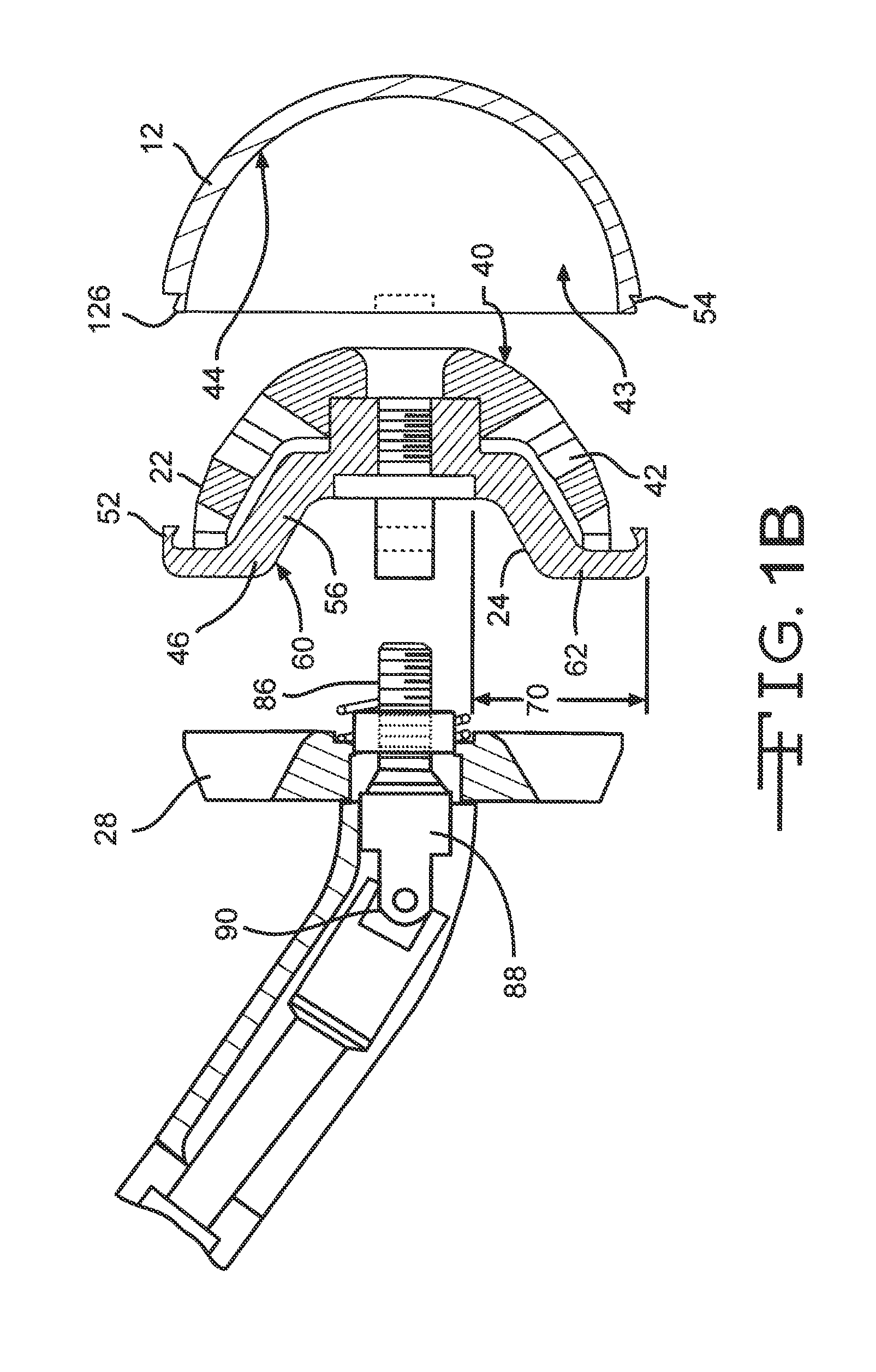Offset cup impactor with a grasping plate for double mobility implants
a technology of acetabular implants and impactors, which is applied in the field of surgical inserters, can solve the problems of difficult cleaning, difficult control, and difficult cleaning of complicated mechanical devices, and achieve the effects of reducing the possibility of cup damage, minimizing stress, and reducing the possibility of implantation procedur
- Summary
- Abstract
- Description
- Claims
- Application Information
AI Technical Summary
Benefits of technology
Problems solved by technology
Method used
Image
Examples
Embodiment Construction
)
[0024]Referring now to FIGS. 1A-9, an acetabular inserter 10 is provided to aid the surgeon in controlling installation of an acetabular cup prosthesis 12. The inserter 10 has a housing 14 which encloses a drive train 16 having, at a distal end, a prosthesis engaging subassembly 18, and at the proximal end, a handle 20 which facilitates moving of the drive train by the operator. The housing 14 may be C-shaped, as shown, in order to minimize invasiveness of the surgery by better clearing anatomical structures and tissue.
[0025]The prosthesis engaging subassembly 18, as illustrated in FIGS. 2 and 3, comprises a nose 22, a grasping plate 24, a spring 26, and an impaction plate 28 that are in direct communication with each other. The grasping plate 24 is positioned between the impaction plate 28 and the nose 22. The spring 26 is further positioned between the impaction plate 28 and the grasping plate 24 of the subassembly 18. Respective axial through-bores 30, 32, 34 extend parallel lon...
PUM
 Login to View More
Login to View More Abstract
Description
Claims
Application Information
 Login to View More
Login to View More - R&D
- Intellectual Property
- Life Sciences
- Materials
- Tech Scout
- Unparalleled Data Quality
- Higher Quality Content
- 60% Fewer Hallucinations
Browse by: Latest US Patents, China's latest patents, Technical Efficacy Thesaurus, Application Domain, Technology Topic, Popular Technical Reports.
© 2025 PatSnap. All rights reserved.Legal|Privacy policy|Modern Slavery Act Transparency Statement|Sitemap|About US| Contact US: help@patsnap.com



